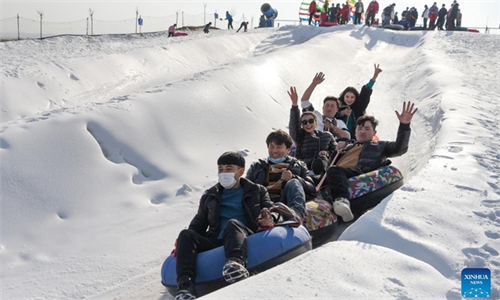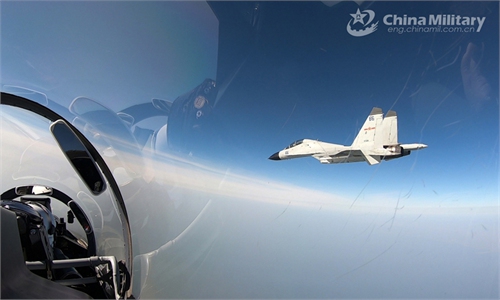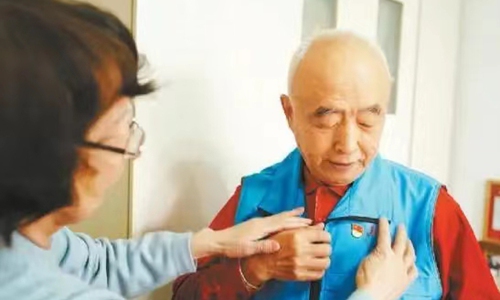ARTS / CULTURE & LEISURE
Beijing, the dual Olympic city, perpetuating the spirits of Winter Games
Coalition & fusion
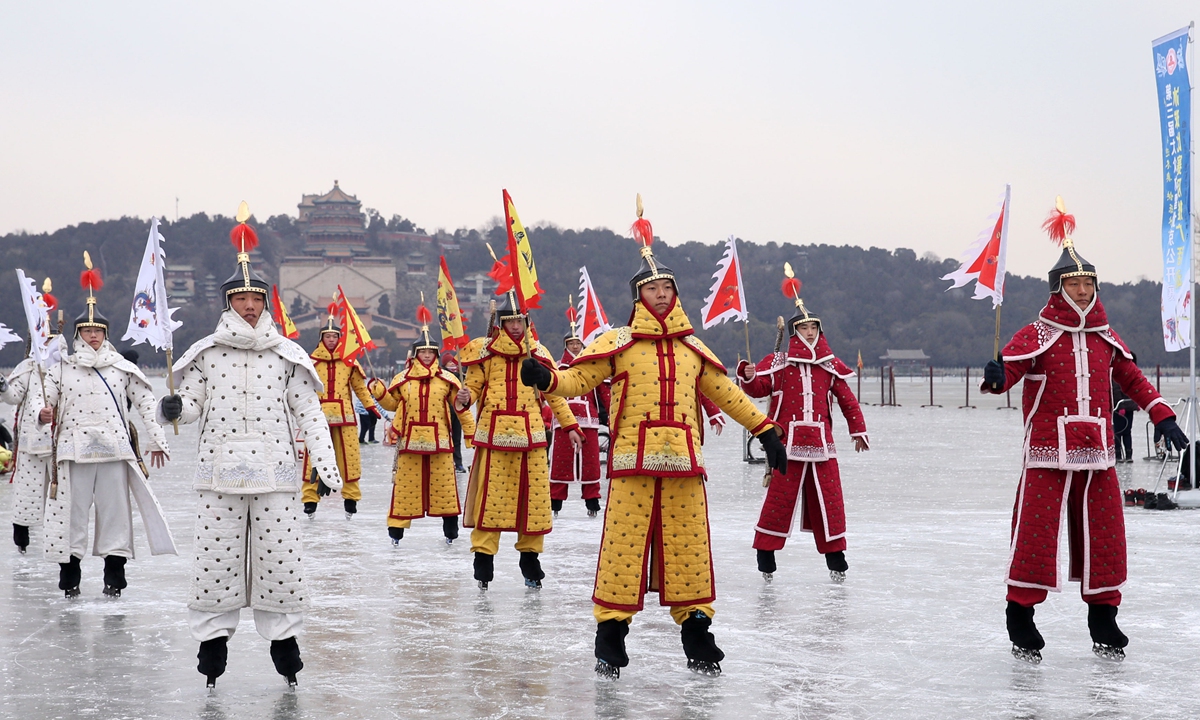
Ice play show at the Beihai Park in Beijing Photo: IC
Editor's Note:Ice and snow sports have never lost their attraction in China, whether in ancient dynasties or at present. Two young people living centuries apart help guide our readers to witness traditional and modern winter sports in China finally meeting in the Beijing 2022 Winter Olympics, a grand event reviving ancient sporting traditions in the city.
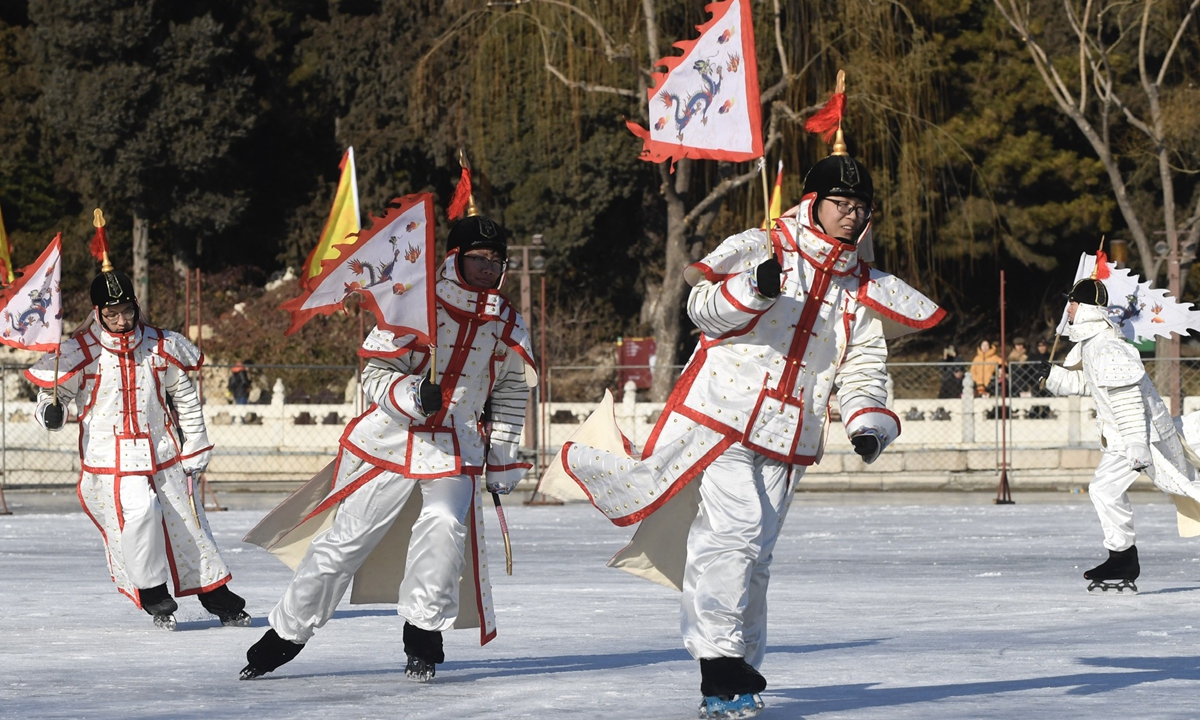
Ice play show at the Beihai Park in Beijing Photo: IC
Tong Ao, a young Manchu banner man of White Banner, is selected for the grand event of ice play in the fifth year of Emperor Qianlong's reign in Qing Dynasty (1644-1911).Bingxi (lit: play on the ice) is one of the most significant national ceremonies in the Emperor Qianlong period, known as the Winter Games in Qing Dynasty. Tong with other nearly 2,000 banner men join the team of ice play, performing fabulous skating for the imperial family and the training started as early as in November, or the 10th month in Chinese Lunar Calendar.
Tong wears ice skates with other banner men three miles away from the dragon boat the emperor sits in. They are waiting for qiangdeng (lit: competing for ranking).
As soon as the order is given, Tong and other competitors race to the finishing line, where the emperor sits, and those who come first to salute to the emperor can rank the first level and acquire the most awards. Tong tries to be included in the first batch and gets citation from the emperor with other winners.
After qiangdeng, Tong rushes to attend the performance on the ice, striking different poses when performing in tandem. The skating poses include standing on a leg, the "double swallows" and the "scorpion." Some skaters even execute acrobatic moves, including handstands, pulling up the flag over the shoulders and over the bars, while on the ice.
Tong continues to skate on the ice and sees a group of people playing ice-cuqiu (lit: soccer on ice) together. Ice-cuqiu, which originated in Beijing was a popular folk sports event in the Qing Dynasty with match rules similar to curling, with the exception of players only using their feet to move the "ball."
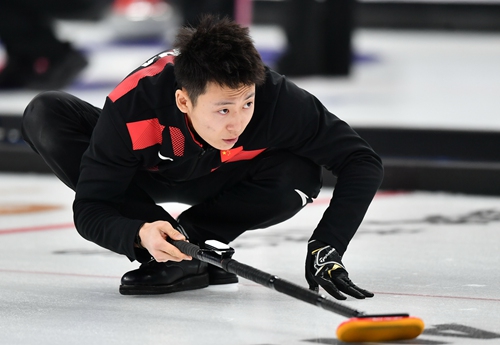
Ma Xiuyue, Chinese curler Photo: VCG
Lou Yu, a big fan of winter sports events, goes to Shichahai, a scenic area in Beijing on Sundays to enjoy speed skating on the ice rink with some of his friends. This is a sport done by some of the fastest non-motorized humans on the planet. It is where Lou indulges in break-neck speed, with little physical contact between athletes, and of course very few accidents. Next to him is a team of short track speed skaters, where Lou decides to stop and watch as he is also a fan of Chinese world champion skater Wu Dajing.Many audiences sometimes confuse the short track speed skating with the speed skating, but they differ from each other in many ways. On one hand, rinks for short track speed skating is smaller than the ones for speed skating. On the other hand, the short track speed skating values tactical arrangements, teamwork, and strategies, where sometimes accidents may happen during the game because of the increased physical contact.
As Lou moves to the middle of the rink, he sees several figure skaters dancing on the ice with many audience members gathering together to enjoy their moves. The modern Winter Olympics sport was first originated in France in 1924.
After years of development in China, the sport is serving to Chinese traditional culture in the sport's artistic essence with high ornamental characteristics. "And that's why our Chinese teams have chosen rather traditional Chinese-style background music. And now listen, they're using 'Liang Zhu,' or 'Butterfly Lovers,'" a spectator tells Lou.
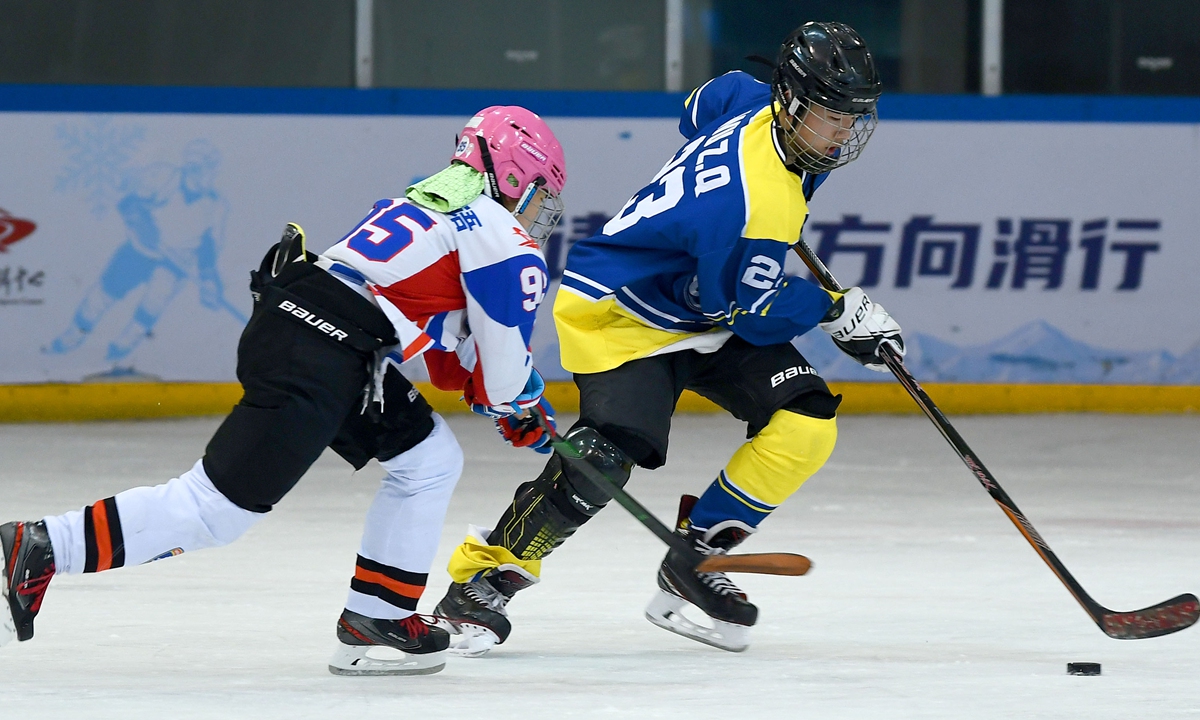
Youngsters play ice hockey in Nanjing, Jiangsu Province Photo: VCG
As Lou turns around, a curling team appears, and Lou decides to join them. The team leader informs Lou that modern-day curling rules as played in the Olympics are quite similar to those used in traditional Chinese ice-cuqiu. The event requires two teams that take turns to slide the granite stone toward a target, which is known as a house.As Lou continues skating, he sees an ice hockey competition where a total of 12 players are competing in tension. Lou joins them during a 15-minute-long intermission. The sport is comprised of no more than six players per team. Even though there are only two events scheduled for the 2022 Beijing Winter Olympic Games' ice hockey competition, it remains one of the most popular sports during the Games. Both the Chinese men's and women's ice hockey teams are set to compete in the Beijing 2022.
